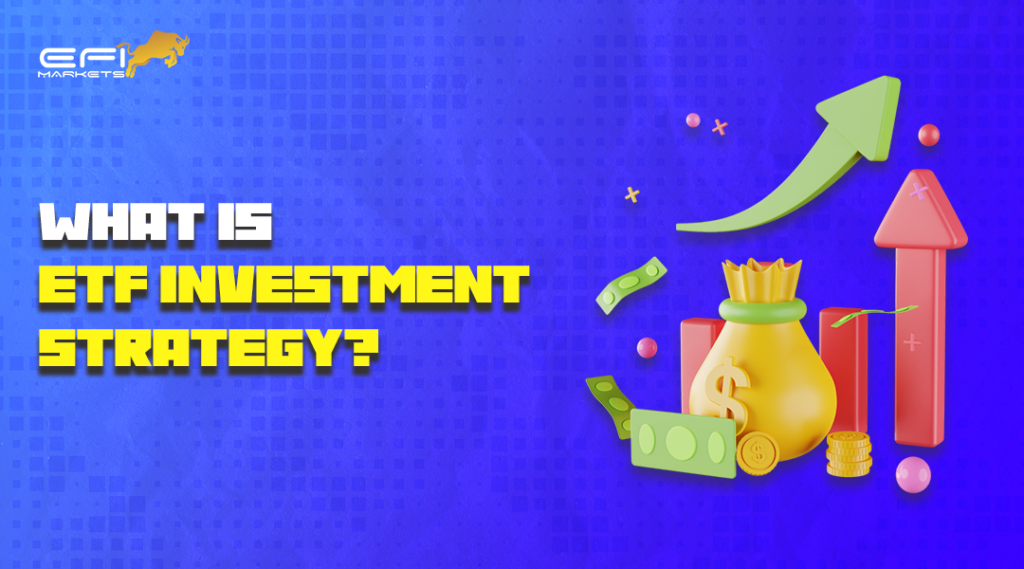
In the realm of investment, Exchange-Traded Funds (ETFs) have emerged as a popular choice for both novice and seasoned investors. Offering a diverse range of assets bundled into a single tradable security, ETFs present an enticing investment avenue. However, navigating the world of ETFs requires a clear understanding of their investment strategies. In this guide, we’ll delve into the fundamentals of ETF investment strategies, shedding light on their intricacies and helping you make informed decisions.
Understanding ETFs: A Brief Overview
Before diving into investment strategies, let’s grasp the basics of ETFs. An ETF is a basket of securities—such as stocks, bonds, commodities, or a combination thereof—that trades on an exchange, similar to a stock. Unlike mutual funds, which are priced once a day after market close, ETFs are traded throughout the day at market-determined prices.
ETF Investment Strategies Explained
1. Passive Investing:
Passive ETFs, also known as index funds, aim to replicate the performance of a specific index, such as the S&P 500 or the Nasdaq 100. These ETFs follow a buy-and-hold strategy, seeking to match the returns of their benchmark index rather than outperforming it. Passive investing is favored for its simplicity, low fees, and tax efficiency.
2. Active Investing:
In contrast to passive ETFs, active ETFs employ portfolio managers or teams to actively trade securities with the goal of outperforming the market. These managers utilize various strategies, such as fundamental analysis, technical analysis, or quantitative modeling, to select investments. Active ETFs offer the potential for higher returns but often come with higher fees and tax implications.
3. Smart Beta Strategies:
Smart beta ETFs combine elements of both passive and active investing. These ETFs track customized indexes designed to exploit specific factors or market inefficiencies, such as low volatility, value, momentum, or quality. Smart beta strategies aim to enhance returns or reduce risk compared to traditional market-cap-weighted indexes.
4. Sector and Theme-Based Investing:
Sector and theme-based ETF Trading focus on specific industries, sectors, or investment themes, allowing investors to capitalize on targeted opportunities or trends. Examples include technology, healthcare, renewable energy, or emerging markets. These ETFs provide exposure to niche segments of the market and can be used for diversification or tactical allocation.
Factors to Consider When Choosing ETF Investment Strategies
1. Investment Goals and Risk Tolerance:
Understand your investment objectives and risk tolerance before selecting an ETF strategy. Passive strategies may be suitable for long-term investors seeking market exposure with minimal effort, while active or thematic strategies may appeal to those comfortable with higher risk and potential rewards.
2. Costs and Fees:
Consider the expense ratio and trading costs associated with ETFs, as these can impact your overall returns. Passive ETFs typically have lower fees compared to active or niche ETFs. Additionally, be mindful of any commissions or brokerage fees incurred when buying or selling ETF shares.
3. Liquidity and Trading Volume:
Evaluate the liquidity and trading volume of an ETF, as higher liquidity typically results in narrower bid-ask spreads and lower trading costs. Popular ETFs tracking well-established indexes tend to have higher liquidity, making them more suitable for investors of all sizes.
4. Tax Efficiency:
Assess the tax implications of different ETF strategies, particularly regarding capital gains distributions. Passive ETFs generally exhibit greater tax efficiency than actively managed funds due to lower portfolio turnover.
Conclusion
ETF investment strategies offer a diverse array of options catering to various investor preferences and objectives. Whether you prefer a hands-off approach with passive indexing or actively managed strategies, understanding the nuances of each strategy is crucial for building a well-rounded investment portfolio. By considering factors such as investment goals, costs, liquidity, and tax efficiency, investors can make informed decisions aligned with their financial aspirations. Remember, investing involves risks, and seeking professional advice is recommended for personalized guidance tailored to your individual circumstances. Happy investing!
